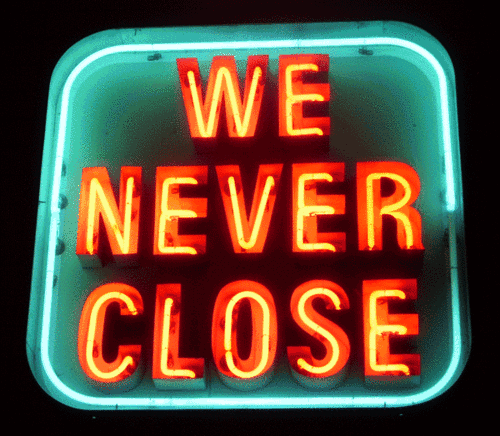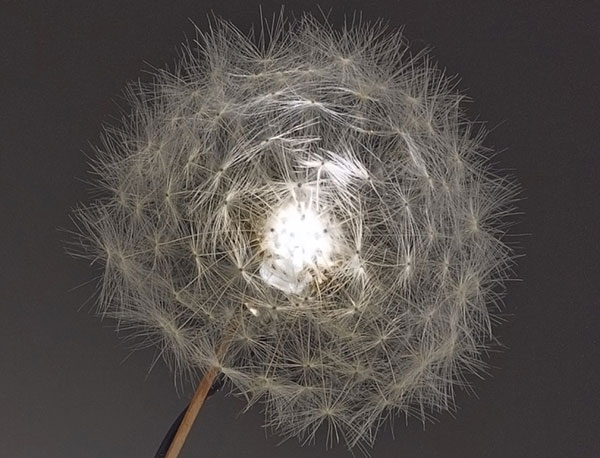Here’s A Bright Idea
The electric light bulb was one of the greatest inventions ever created, and lighting has only gotten better from there. Enlighten yourself.

The guy who invented neon lighting opposed his own country during World War II
What if Steve Jobs were French, born 80 years earlier, and was at the height of his success during the early 20th century?
Jobs may have turned out a lot like Georges Claude, whose early work liquefying air at an industrial level eventually helped to turn Times Square into the world's brightest place. See, Claude had a problem—the process he used to liquefy air left him with a lot of extra byproduct in the form of neon. With a little help from prior efforts to convert gases into light sources, Claude had soon invented the usage of thin containers filled with heated neon gas to create bright lights.
At first, much of this lighting was a bright orange-red. With the addition of other chemicals like mercury or argon, his company could create other kinds of colors. By adding coloring to the glass, they created even more colors. The effect of this lighting was stunning—and it made advertising at night possible. And by discovering a key electrode, Claude made the process cheap.
Best part? As Claude had a patent on this process in the U.S., he was in a role to control its early growth.
Claude had other impressive successes—including the invention of a machine that could turn ocean water into electricity—but it's neon lighting that may have been his biggest success story.
His biggest failure, however, had to do with his politics.
Supporting the guys who took over France
See, Georges Claude liked his leadership like he liked his gases: noble.
This sounds like an unlikely point of view to carry in the present day, but Claude, as a supporter of the right-wing political group Action Française, backed the return to monarchy-style leadership in France.
He leveraged his skills with neon in politics. The book Flickering Light: A History of Neon highlights an attempt by Claude to use his technology to drum up support for a fight against the rise of "professional politicians," in favor of technocrats. During one campaign speech, he used neon and a few lighting tricks to make a bunch of cornflowers appear black, then shift the colors back. (Owning an unlimited supply of neon is a pretty good way to become a solid public speaker.)
He lost the election, but his political views followed this path, and fortunately for him, monarchy-style rule was coming to France—kinda. In the 1930s and 1940s, he became a strong supporter of Nazi Germany's occupation of the country, often traveling at great personal expense to encourage the public to support the leadership—only ratcheting things up when the Nazis took over.
We all know what happened next: Germany fell, and world leaders were quick to punish those who supported Naziism. Claude was on that list, and he suffered a harsh punishment—in 1945, at the age of 74, he received a life sentence for his propaganda work. Eventually though, his value as a capital-I Important scientist led to his release in 1950. He died a decade later at age 89, his role in changing the brightness level of our world largely forgotten.
“Everybody’s going green, but we’re still hot and red. My bulbs use a lot of energy and make the air conditioning work overtime.”
— Bob Rosenzweig, the owner of the specialty light-makers Aamsco, in a 2010 interview with The New York Times about how restaurants use incredibly inefficient lighting sources because they look nicer. On the plus side, in the five years since he did that interview, the company with a name only a phone book could love has evolved in its lighting approach. It now sells hybrid LED filament bulbs, which recreate the look of old-school light bulbs without using quite so much energy. The company's winning awards for this new product, which should be a good sign for the future of electricity.

In defense of the rise of LED lighting
Last week, author Dan Koeppel made a pretty bold argument on Medium's Matter vertical: LED lighting was starting to win out over neon, and the results were pretty freaking ugly.
The reason they were ugly, simply put, is that the LED lights were attempting to recreate a retro style that didn't translate very well to a modern lighting source. Koeppel's point was exemplified most effectively in the case of the LED "Open" sign, which came out of nowhere within the past decade to become ubiquitous in businesses worldwide.
Hate all you want, though, but LED lighting has the potential to change the world. Literally, the Nobel Prize judges said so. Back in October, Japanese scientists Isamu Akasaki, Hiroshi Amano and Shuji Nakamura won the Nobel Prize for Physics for creating blue LEDs, which made the LED-driven open signs possible, back in the 1990s. But more importantly, they set the stage for white LEDs, a product that will make lighting more efficient than it's ever been.
"They succeeded where everyone else had failed. Akasaki worked together with Amano at the University of Nagoya, while Nakamura was employed at Nichia Chemicals, a small company in Tokushima," the Nobel judges wrote. "Their inventions were revolutionary. Incandescent light bulbs lit the 20th century; the 21st century will be lit by LED lamps."
And of course, context is everything. There are plenty of great-looking lights out there that are made with LEDs in mind. For example, the Netherlands-based Studio Drift sells an LED light that looks like a dandelion. It's composed of bronze, a couple of wires, and a number of actual dandelion seeds. It's freaking beautiful—the kind of beautiful that might be museum-worthy. (It's worth noting that MOMA sells these lights for $140 a pop.)
And LED lighting has the potential of solving some major problems in third-world countries. (This is part of the reason those Japanese dudes won the Nobel Prize.) The lights are cheap to produce, don't require access to the electrical grid, and are incredibly efficient—especially compared with what else was out there.
"People were spending about $38 billion a year on kerosene. The poorest people were spending the most for the worst," noted Russell Sturm of International Finance Corp., the portion of the World Bank that is funding access to LED lighting for third-world countries. "You and I complain when the cost of our flip-a-switch electricity goes up to 15 cents a kilowatt hour. The people using open-flame kerosene lighting are paying on the order of $80 a kilowatt hour. Again, these are the poorest people in the world."
Now, that may still make those "Open" signs ugly, but I think the tradeoff is pretty much worth it.
Last month, Anna Stork and Andrea Sreshta impressed the hell out of Mark Cuban and the rest of the Shark Tank crew. The duo came up with an amazingly bright idea—one that all five of the sharks bid on.
"I like it, it's a great product, but I'm more interested in where you're going to go," Cuban told the two founders of LuminAID, a device that combines an LED light with an inflatable bubble of plastic. The result is a light that is waterproof, glows brightly, can be recharged using solar power, and is incredibly cheap—so cheap that the company can donate light to people in need, using a one-for-you-one-for-them model similar to TOMS shoes.
Cuban won with an offer of $200,000 for 15 percent of the company and a deal to help them score more venture capital down the road.The company trended on Twitter. The women became local heroes.
"The women of LuminAID are doing more than building a business,"Clean Energy Trust CEO Amy Francetic wrote on HuffPo. "They are inspiring the next generation of entrepreneurs by being one of Chicago's leaders in a clean energy revolution."
Think of it this way: A century ago, a guy with an enlightening idea used light as a weapon to sell some controversial views to protect a way of life that was beneficial for him, personally. Today, two women with an enlightening idea of their own are sharing that light with parts of the world that would remain in the dark otherwise.
We may be closer than ever to the enlightened age.
:format(jpeg)/2018/11/mwpxrvczdyeltp8fmhty--1-.gif)
/2018/11/mwpxrvczdyeltp8fmhty--1-.gif)

/uploads/ernie_crop.jpg)